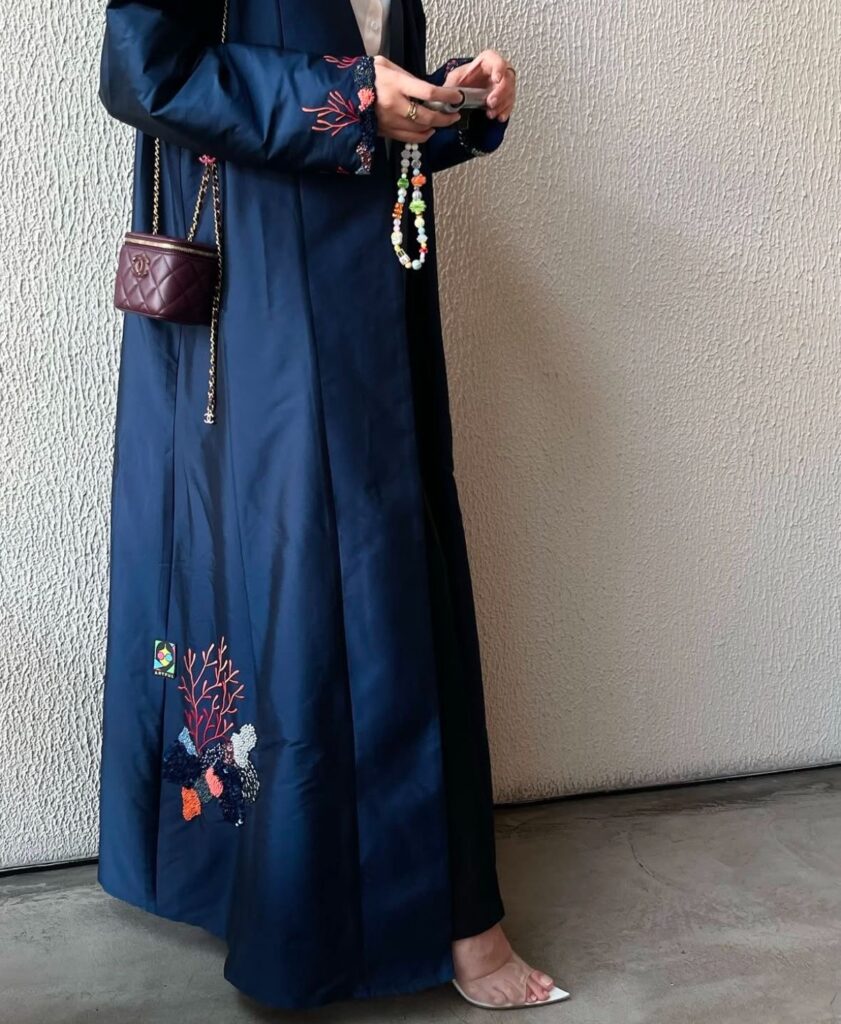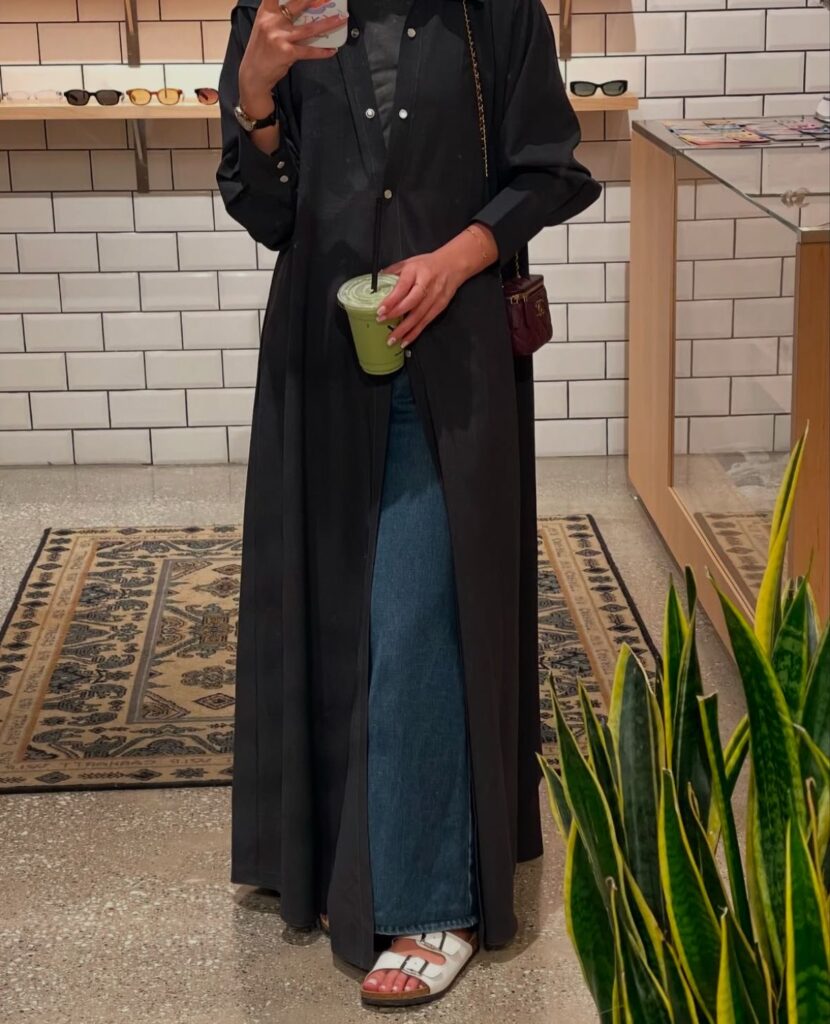
Strollers at Abu Dhabi’s Yas Mall or Mamsha Beach can witness fashion in the making. Sprinkled among women wearing the flowing traditional black abayas are fledgling fashionistas who blend heritage with Gen-Z style.
On an April day, one young woman wears a sandstorm yellow silk abaya with a chocolate brown Loewe bag, a teddy bear and a beaded keychain hanging on the strap. Walking by her side, another woman shows off a glittering abaya with beading that traces the edges of the sleeves, paired with Chanel sunglasses and Adidas sneakers.
When it comes to abaya fashion in Persian Gulf nations, experimentation is the name of the game.
After being popularized in Dubai over the last few years, the abaya in the rest of the Gulf has gone through a colorful transformation characterized by buttons, patterns and florals worn by women under 25.
“The shift to colors and patterns is a trend in itself, and what was once a bold choice has now become much more popular,” NYUAD first year Emirati Sara Alremeithi said standing in her blush pink abaya outside a university classroom.
Although the black abaya has maintained its status as conventional attire in the UAE for 50 years, young women are pushing the limits of tradition. The abaya adheres to the Islamic religious and cultural principle of modesty by covering women from wrist to ankle. The garment rose in prominence after the nation’s founding in 1971 as a symbol of Emirati citizenship. By the 2010s, some women made smaller styling modifications with embroideries along the center or with the inclusion of beads and sequins.
Maximalist accessories and embellished abayas were first popular when NYUAD fourth year Emirati Naama Alahmed’s mother and aunt who are now in their 40s, were in their twenties. However, their approach to experimentation is now deemed outdated. Alahmed has noticed that after 2016, trends reflected in simpler styling, young women began accessorizing again.
“Statement jewelry and abayas are making a comeback. A lot of young girls are taking it up a level with their abayas and jewelry, as well as bag and phone charms,” Alahmed said.
Colored abayas, typically often priced higher than black ones (ranging from 100-300 AED), are commonly worn casually by young women, while black abayas are reserved for formal occasions like celebrations and holidays.
The “abaya-as-fashion” trend has been stoked by social media, with TikTok and Instagram accounts meshing Western and modest styles into a singular look. This can be seen all over the country, women waiting in line for coffee in satin turquoise abayas with Birkenstocks, or rushing to class wearing linen black abayas adorned with white roses threaded along the hem worn over Levi’s and a white long-sleeved shirt.
Amna AlQubaisi, Emirati NYUAD first year, describes the abaya as a statement of individuality, one that blends her heritage with influences from her friends and inspiration drawn from social media.
“The colors I wear represent me,” AlQubaisi said. “I enjoy dressing up and expressing myself through fashion. Wearing bright or earthy tones makes me feel more approachable and confident.”

Social media, along with the Gulf countries’ growing influence in global trade and cultural exchange with other nations, has been reflected in the evolving styles of abaya.
At NYUAD and other universities that hold a more “liberal” reputation, colored abayas are more common among female students. Laure Assaf, NYUAD Professor of Arab Crossroad Studies, explained that the social risks of new trends are often lessened when experimented with in a university environment.
“Fashion is one of those things that happens at the scale of society,” Assaf said. “It is a negotiation with social judgement.” On a university campus where many are adopting this trend, it becomes normalized for all.
However, the presence of these trends manifest at different paces based on each city. It has taken longer for less traditional abayas to be accepted in Abu Dhabi in comparison to Dubai, as people there are more willing to experiment with bolder styles.
“When colored abayas became popular in Dubai, many in Abu Dhabi still preferred traditional black and avoided colors,” Alremeithi said. “However, it wasn’t uncommon for people from Abu Dhabi to wear colored abayas when traveling to Dubai, where the trend was already well established.”
In more conservative Gulf cities like Abu Dhabi, there has been pushback from older generations as abayas have begun to stray from traditional styling. For many women, the black abaya has a strong cultural connection. Alremeithi explained that due to traditional abayas symbolizing modesty and respect for cultural values, some older women may see modern, embellished or patterned abayas as a departure from those principles.
“There may be concerns about maintaining cultural identity in the face of rapidly changing fashion trends,” Alremeithi said. “There’s still a sense of cultural preservation in more conservative circles, where tradition holds a significant place in everyday life.”
